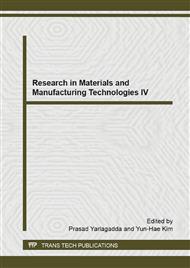p.189
p.193
p.201
p.205
p.209
p.215
p.223
p.230
p.234
Effects of Substrate Temperature on the Properties of Cu(In,Ga)Se2 Thin Films Prepared by Sputtering from a Quaternary Target
Abstract:
Cu (In,Ga)Se2 (CIGS) thin films were prepared by direct magnetron sputtering CIGS quaternary target at the substrate temperature varying from room temperature (RT) to 300 °C. The effects of substrate temperature on the structural and electrical properties of CIGS films were characterized by X-ray diffraction (XRD), scanning electron microscopy (SEM), energy dispersive X-ray (EDX) and Hall effect measurement. The CIGS thin films with a chalcopyrite structure were obtained between 100 and 300 °C and the crystallinity of films were enhanced with the increase of the substrate temperature from 100 to 300 °C. The film compositions were consisted with the target when the substrate temperatures were between RT and 200 °C, however, it deviated from the stoichiometry of the target when the substrate temperature was 300 °C. The CIGS films deposited at 200 °C had the higher carrier mobility of 3.522 cm2/Vs.
Info:
Periodical:
Pages:
209-214
Citation:
Online since:
December 2014
Authors:
Keywords:
Price:
Сopyright:
© 2015 Trans Tech Publications Ltd. All Rights Reserved
Share:
Citation:


